Paws Up for National Pet Dental Health Care Month
Dental health in our pets, what does that mean? While February is National Pet Dental Health Month, It is very important to take part in your pets oral hygiene throughout the year. In this blog you will learn about preventive and active measures to ensure optimal oral health.
Regularly Brushing
Brushing your pets teeth, although we find these efforts to be strange, They can be the most effective way to keep those teeth and gums healthy between yearly professional dental cleanings. You may even find the reduction of periodic dental cleaning by your veterinarian yearly exam.
What’s that smell?
Why the turned up nose? Bad breath can be a sign of many issues involving your pet’s gums and teeth. Plaque and tarter below the gumline is the leading cause for infection causing periodontal disease if left untreated. Periodontal disease doesn’t only effect your pet’s mouth, it creates other health issues, including heart muscle changes, kidney problems and liver issues. Not to mention causing severe problems and pain in your pet. Studies have shown by the time your pet approaches 3 years of age, he or she will very likely develop early on signs of periodontal disease. In treating periodontal disease a dental cleaning and x’rays will be needed to evaluate the severity.
Becoming aware and setting the course of prevention can lesson the plaque becoming tarter. Tarter above the gumline can easily be seen and removed. Once the plaque and tarter proceed below the gumline, damage will set its course for infection while causing damage to the jawbone and connective tissue.
Why is it so important to keep your pet up to date with their oral hygiene consultation?
Below you will find a catalog of images displaying before and after dental cleanings of our clients.
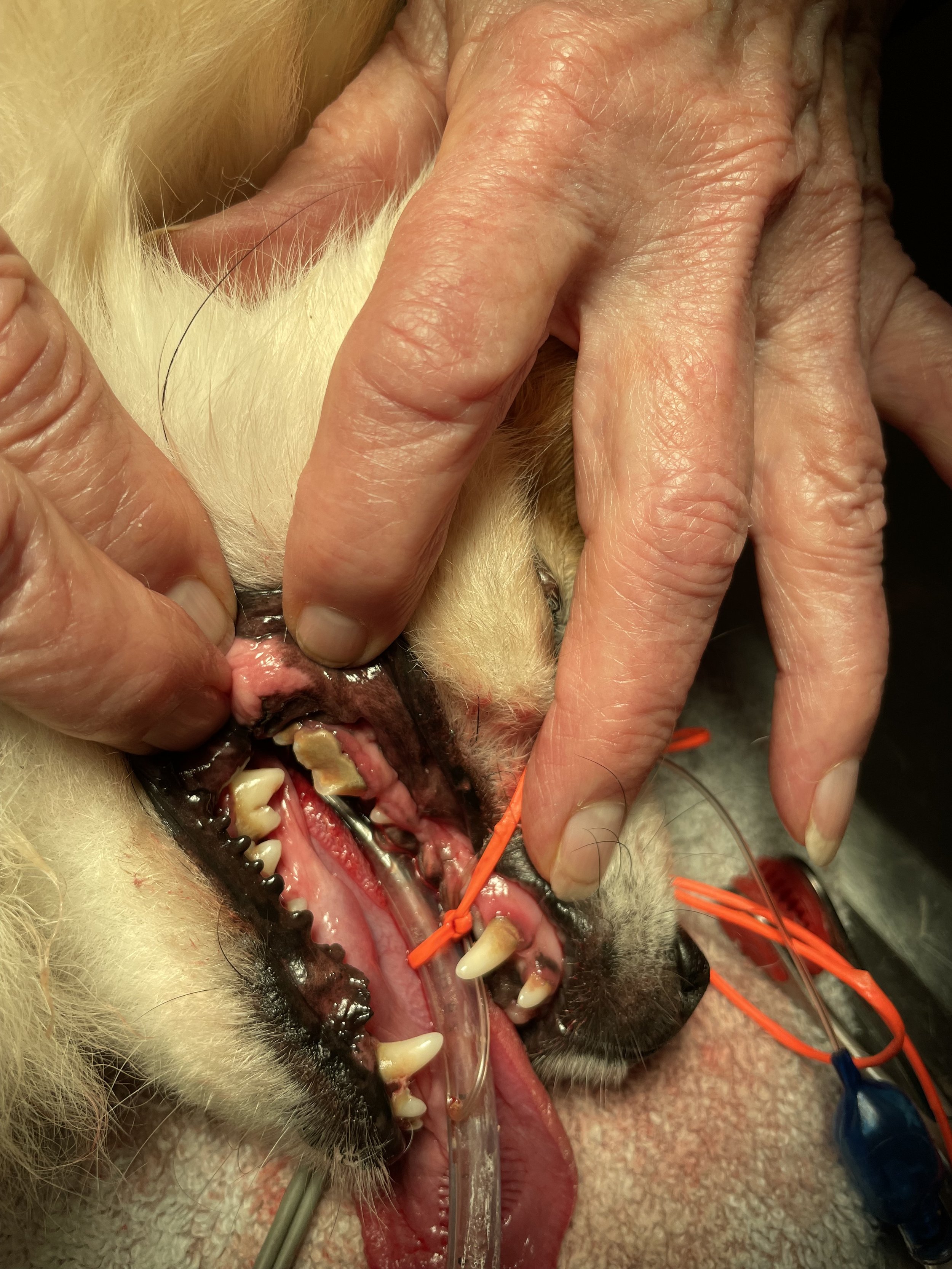
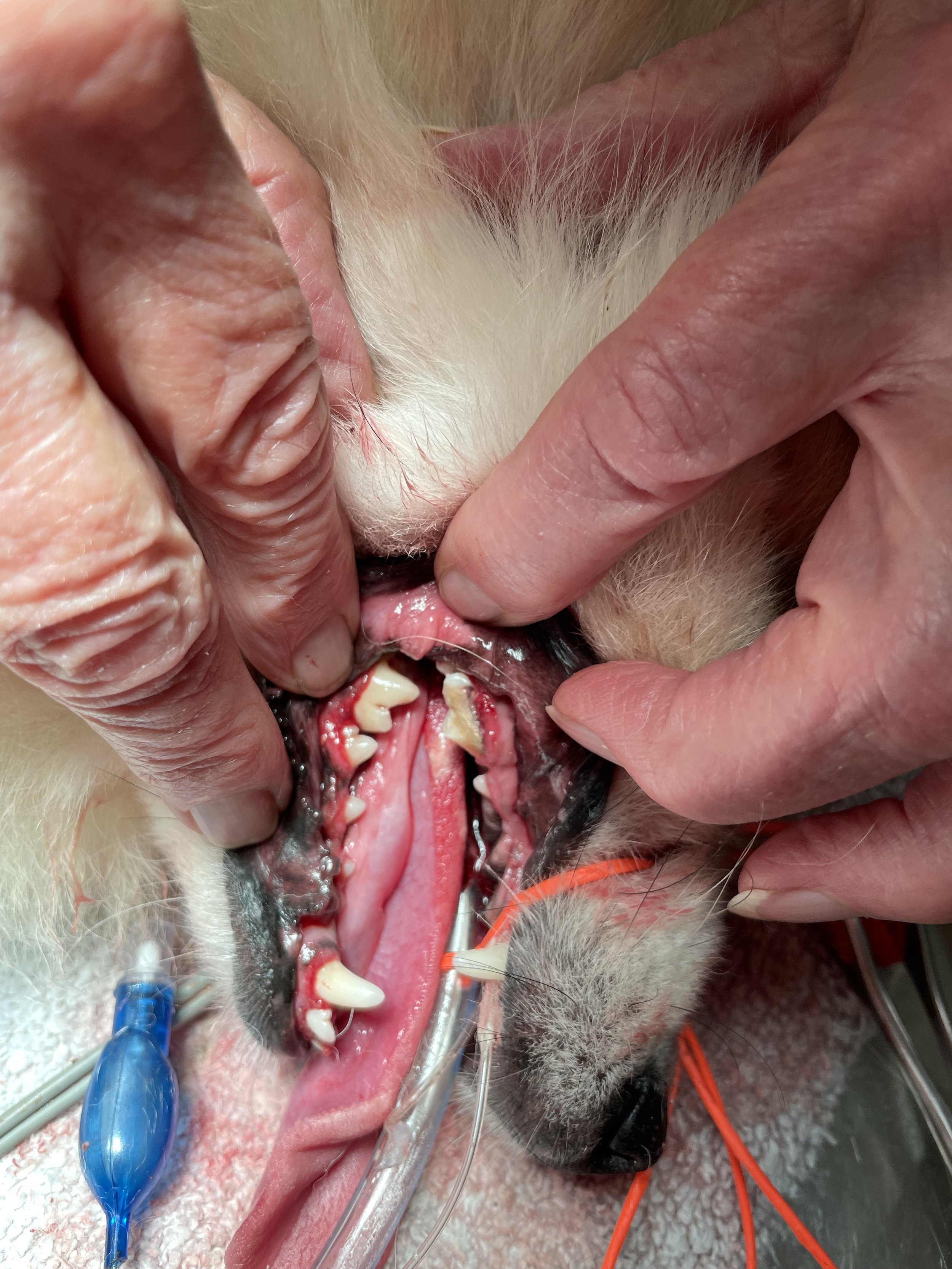
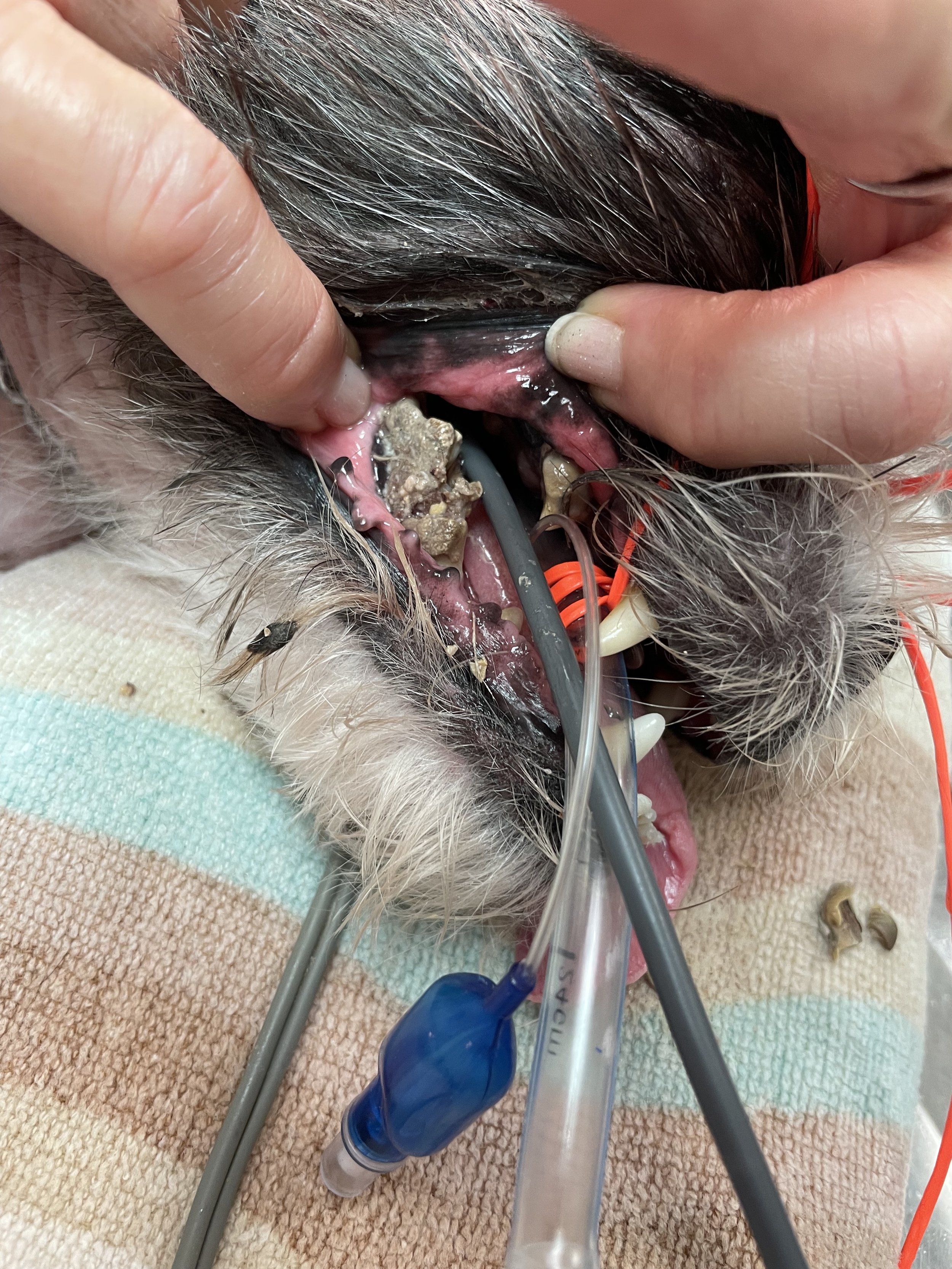
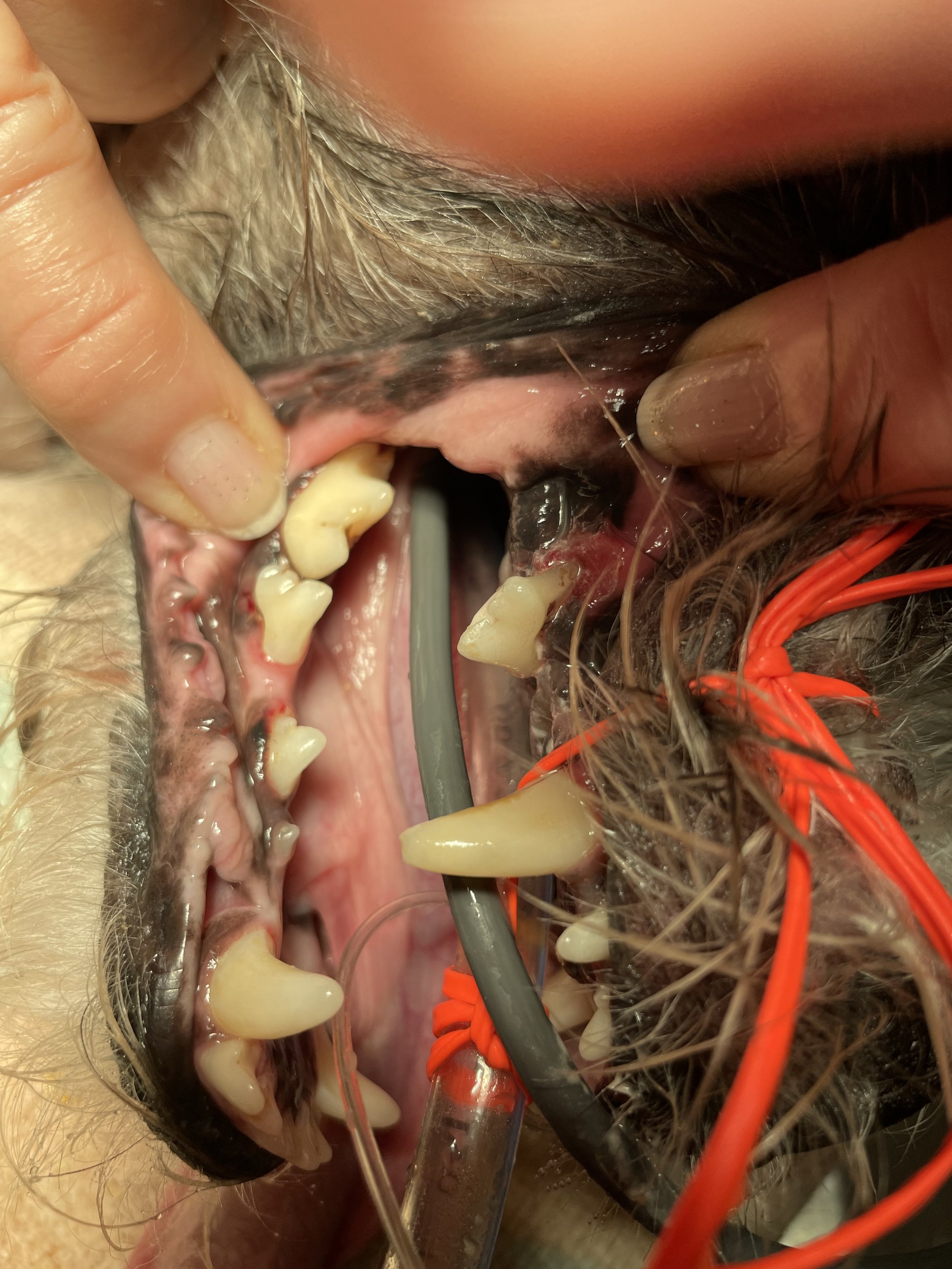
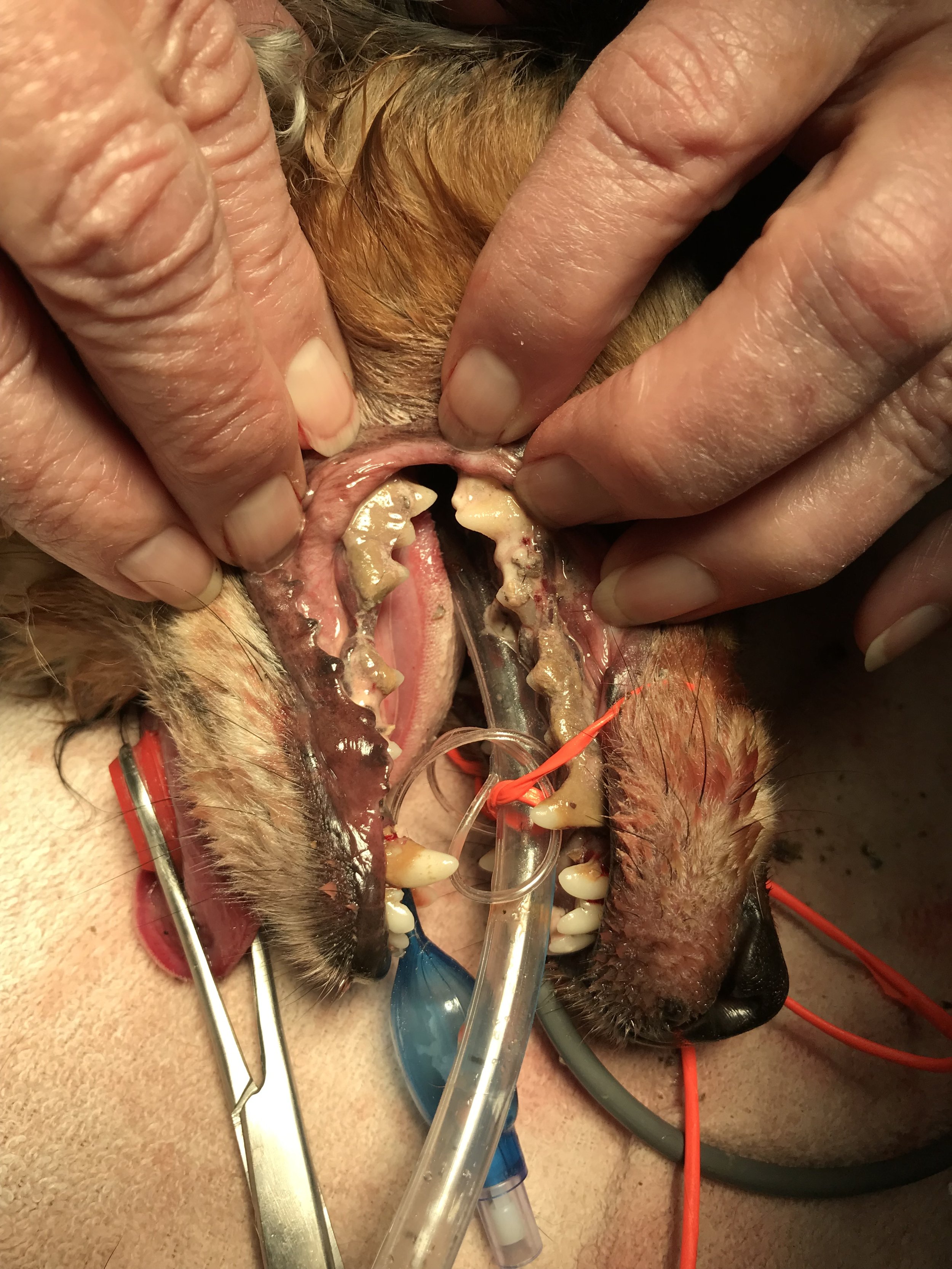
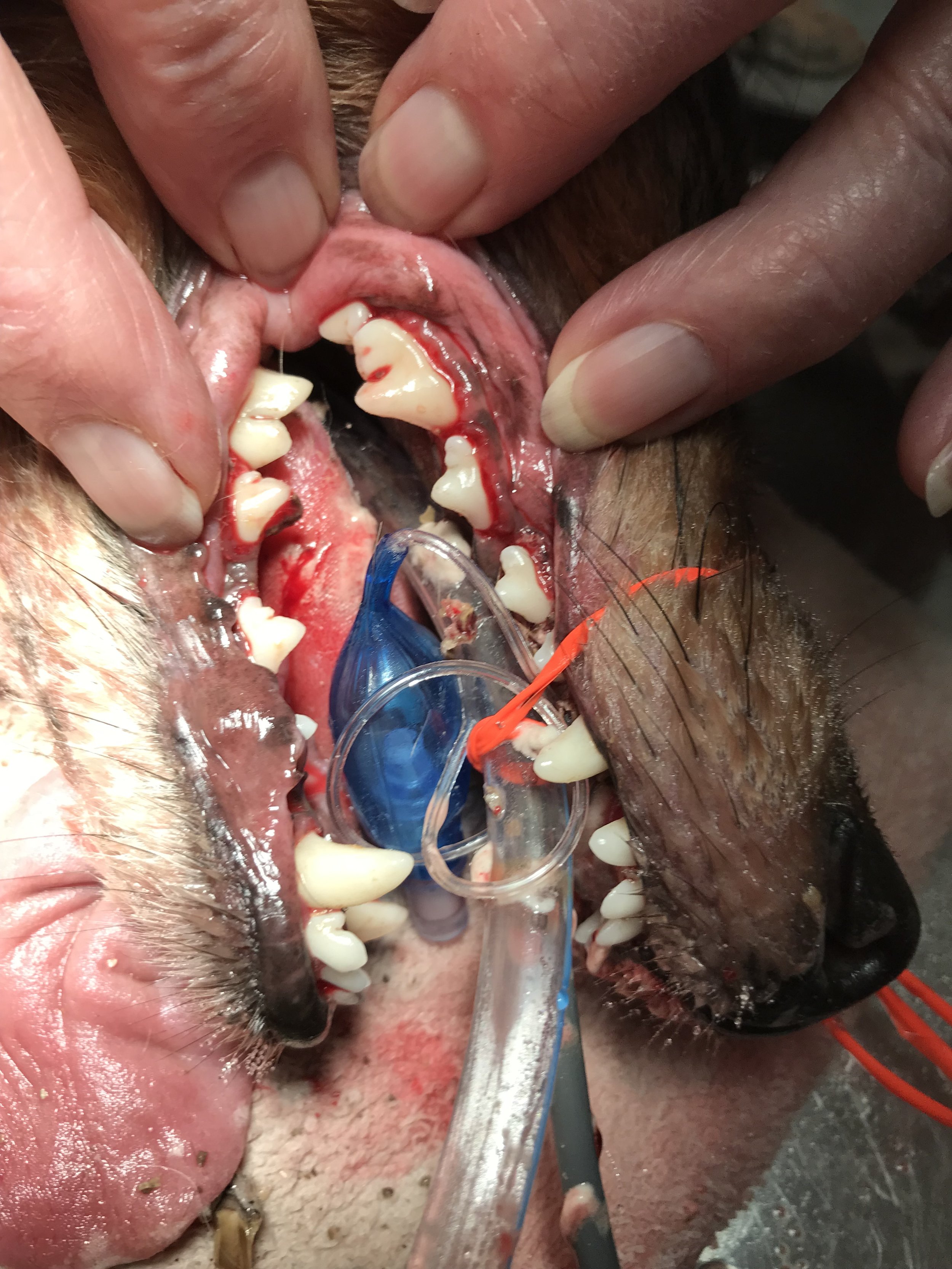
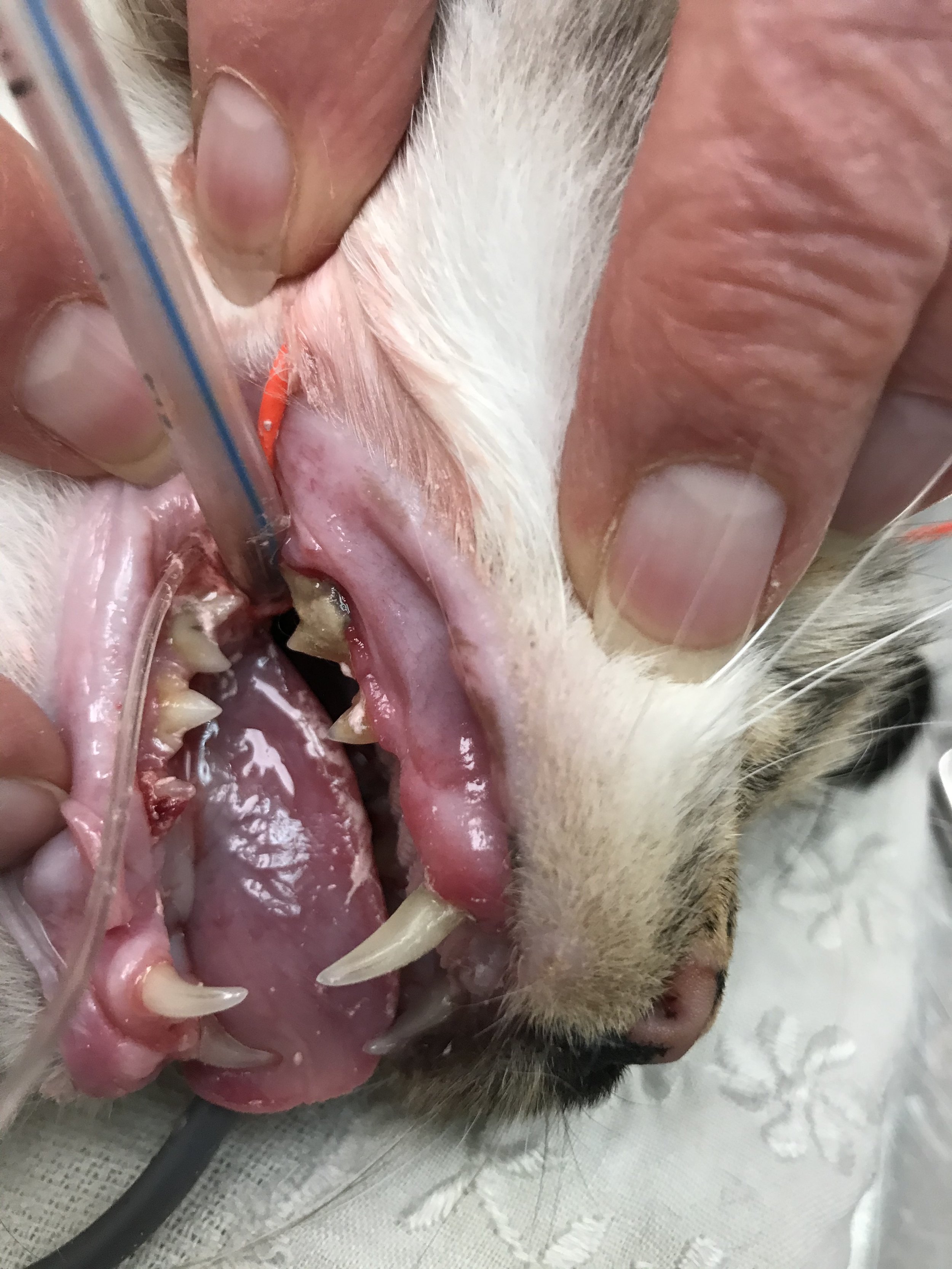
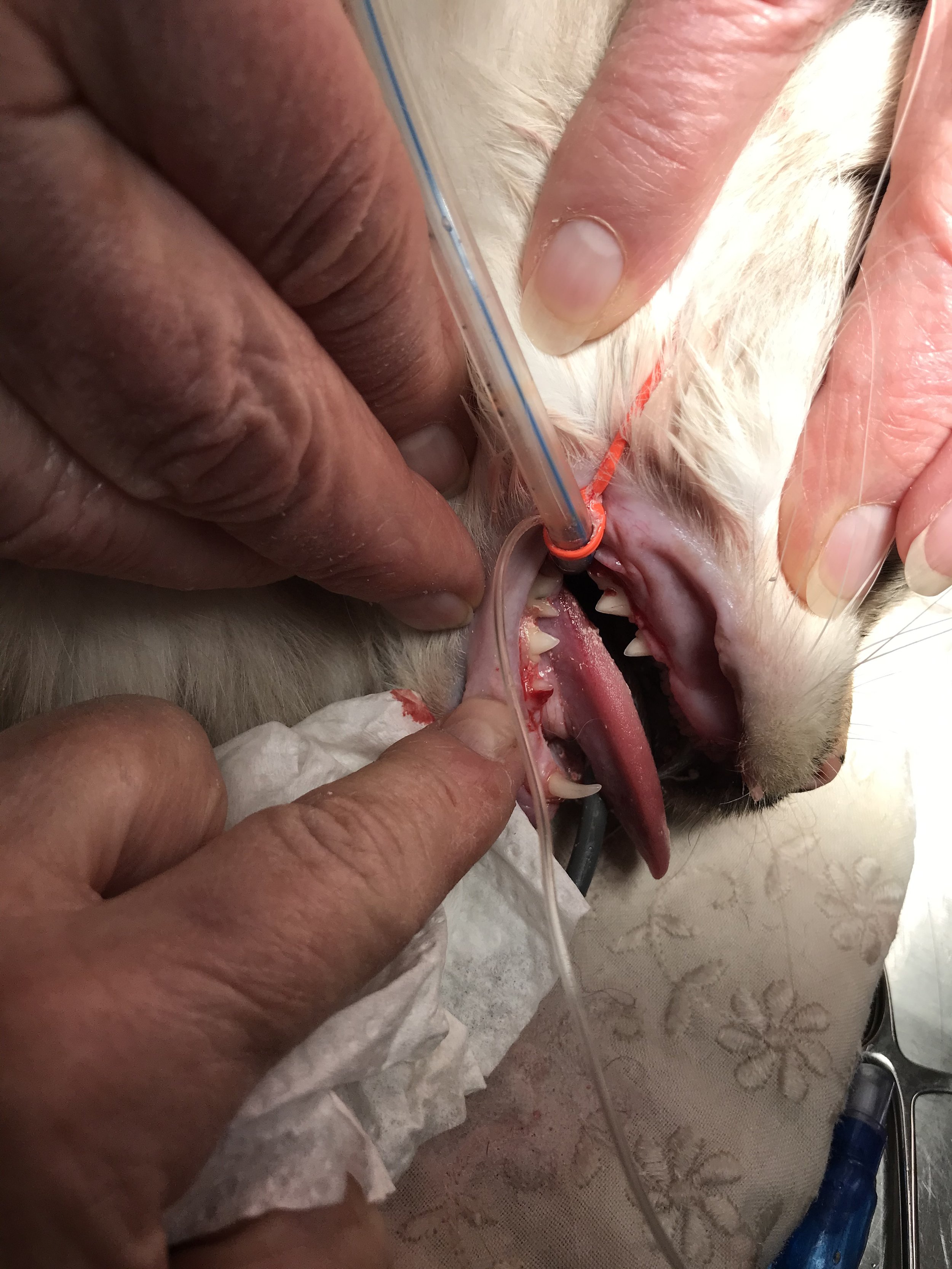
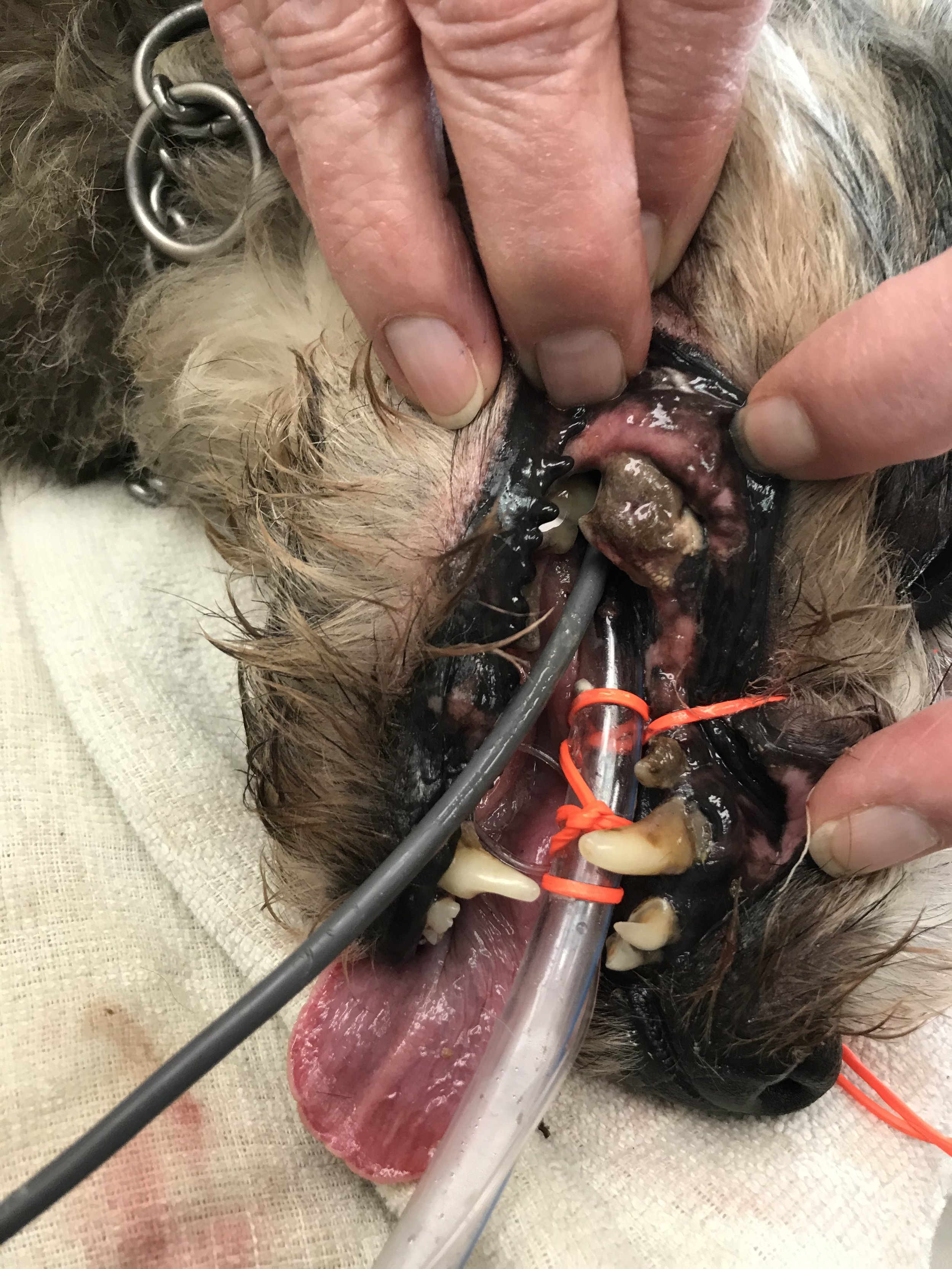
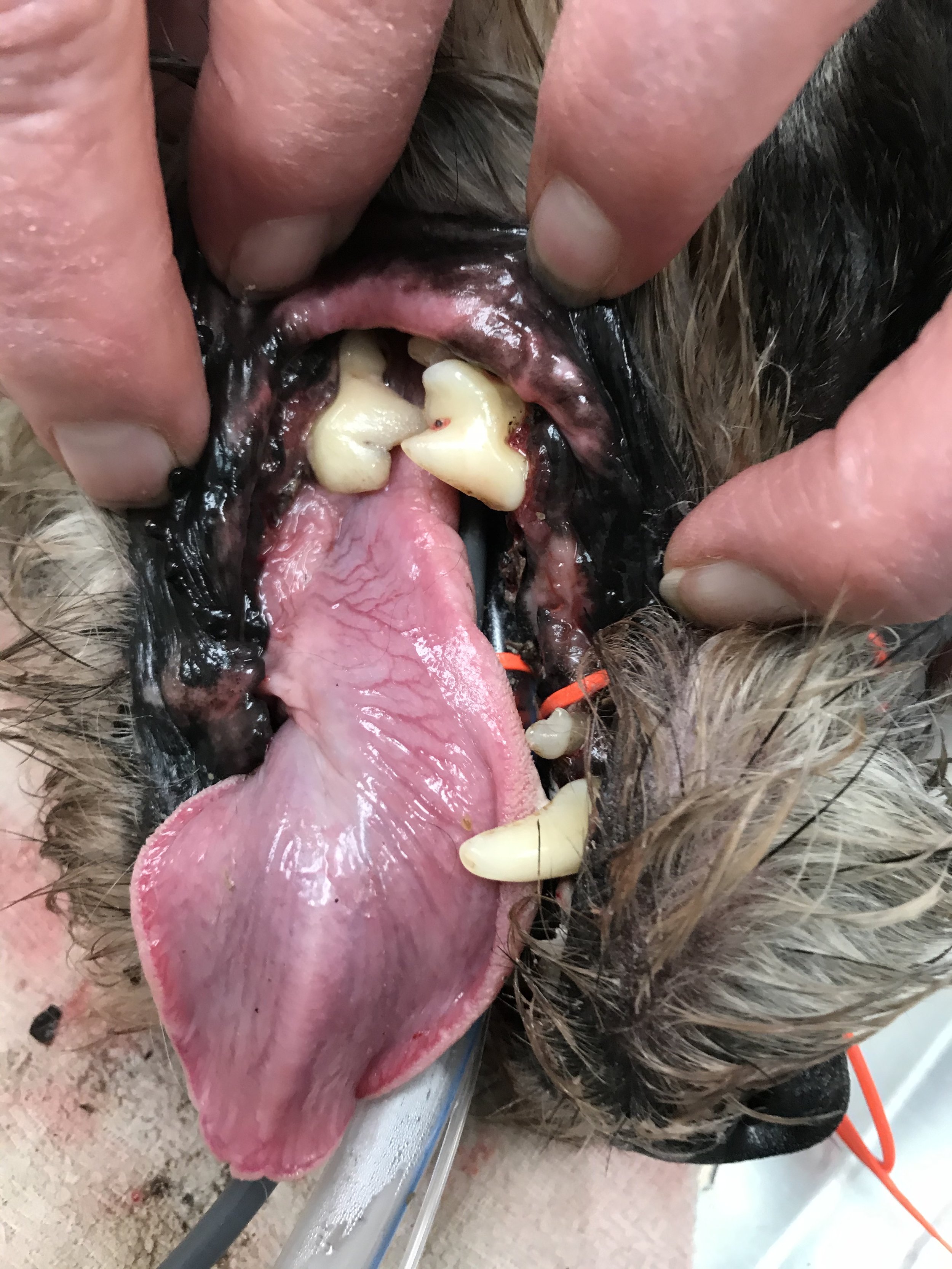
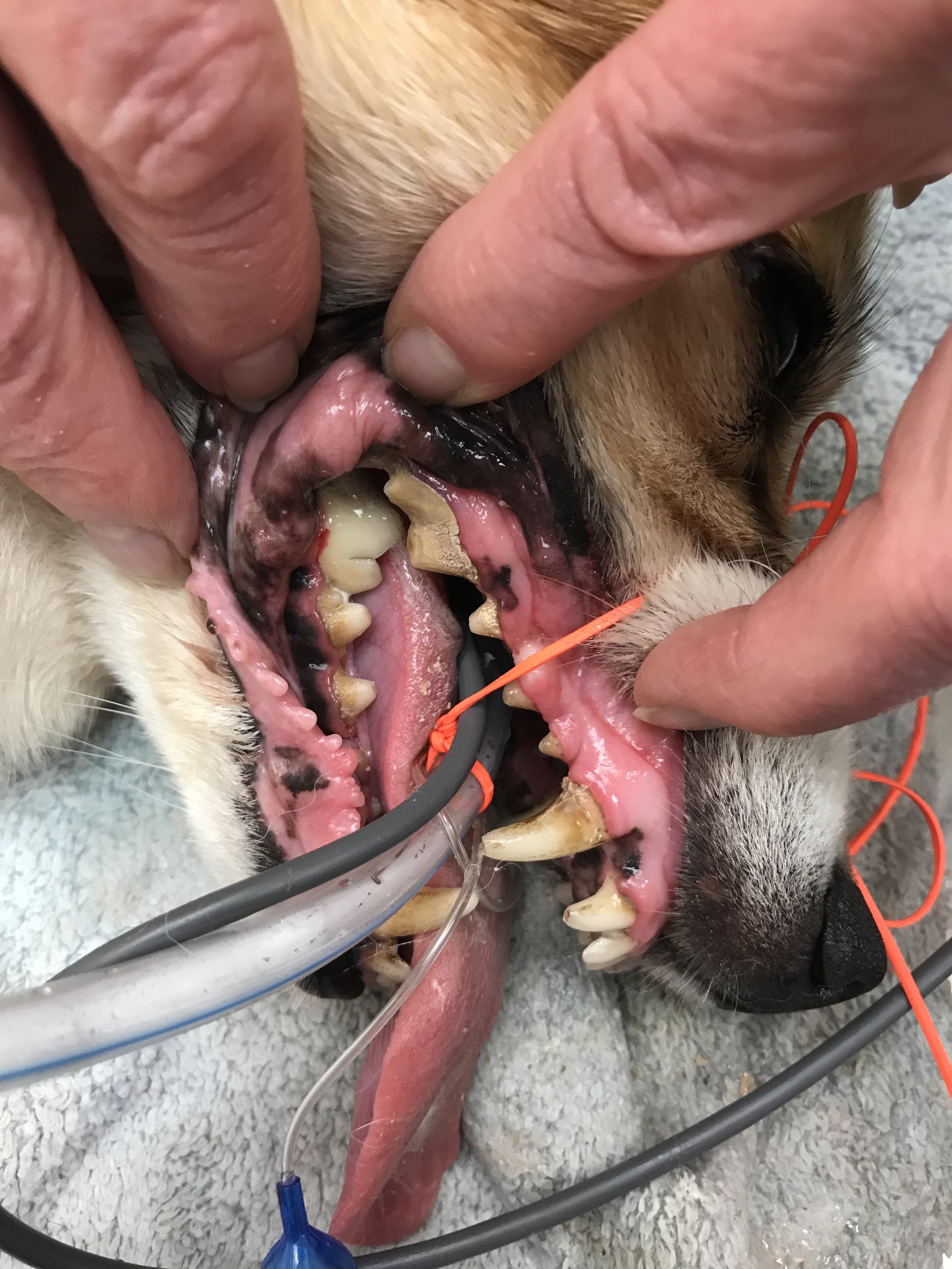
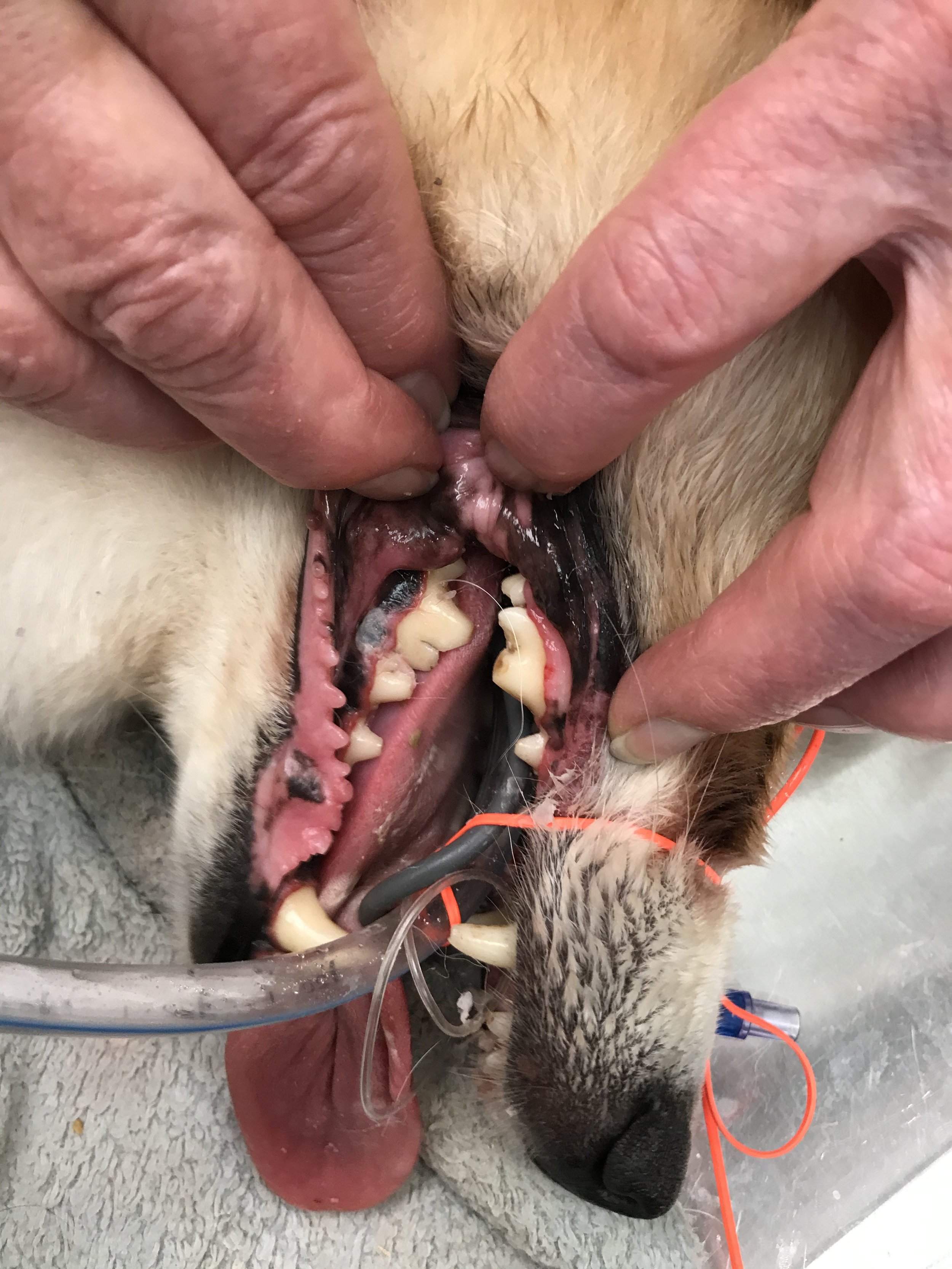
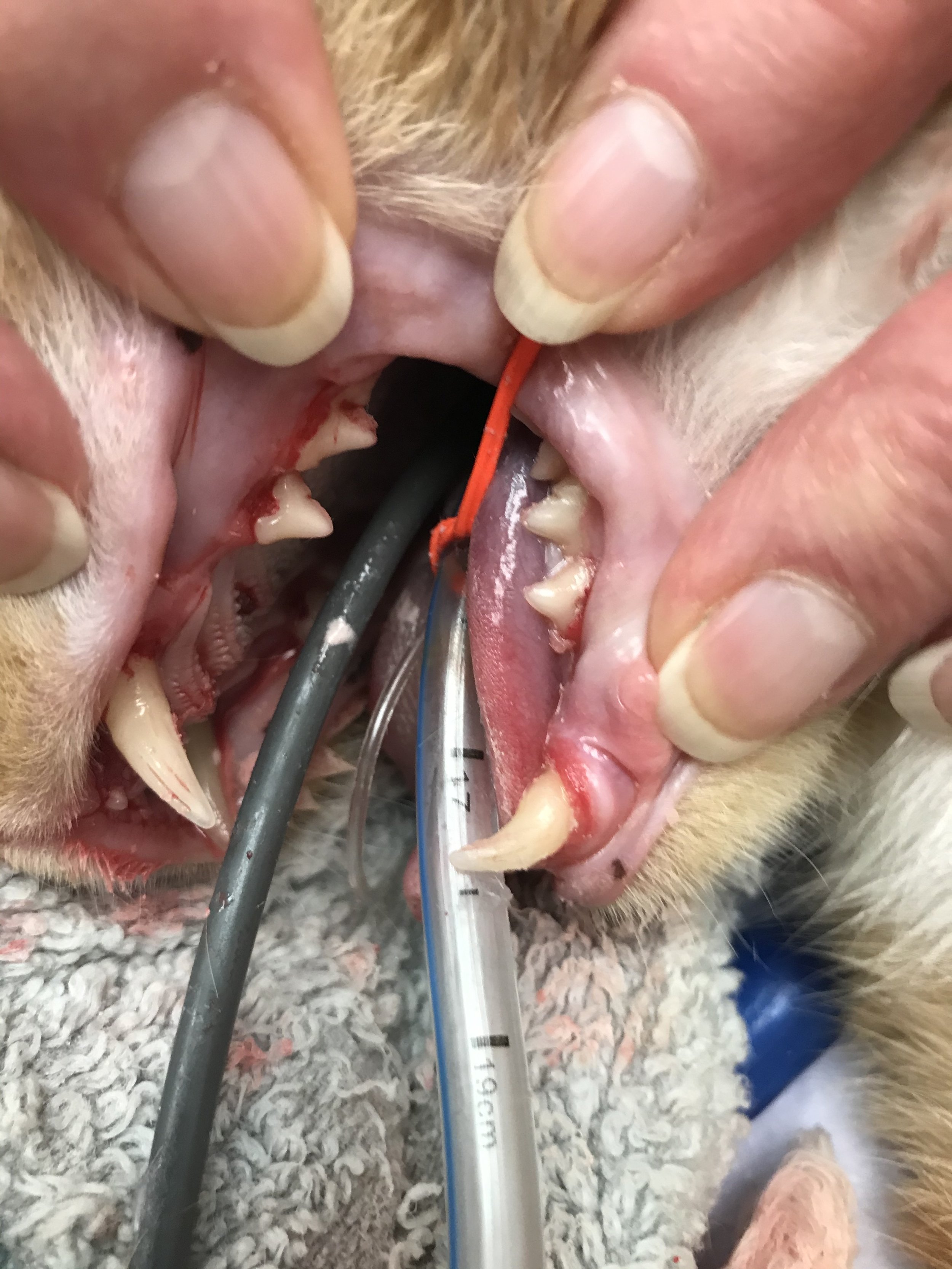

Pets have teeth too!
Dentistry is a necessary component of your pet's overall health. Routine dental examinations are routinely done as a part of a physical examination. Oral infections can often go unnoticed to an owner until they notice their pet's breath smelling foul or not eating well.
Dental cleansing requires general anesthesia and antibiotics. If extractions are done, pain management is also utilized to maintain your pet's comfort throughout the procedure. Your pet's teeth will be charted and become part of the medical record.
“Over the years I’ve come to appreciate how animals enter our lives prepared to teach and far from being burdened by an inability to speak they have many different ways to communicate. It is up to us to listen more than hear, to look into more than past.” Nick Trout, British-Born Veterinarian and Author
Blog written: Doreen Levers





